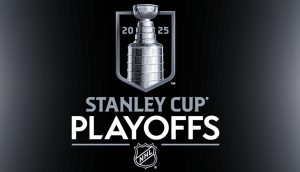In an event hosted by the Out of Home Marketing Association (OMAC) last week in Toronto, UK-based consultancy firm BrandScience presented its research on OOH, indicating that although there are differences in the UK media market compared to North America, OOH’s ability to complement other media is as applicable here as it is across the pond.
In front of about 75 media professionals, BrandScience global director Sally Dickerson revealed the findings of the consultancy’s latest study on OOH’s effectiveness in terms of RROI in relation to other media. The BrandScience econometrics research distilled the rate on investment from media and marketing spend of about 400 case studies in the UK, including 100 Nielsen-rated retailers and the top 100 financial services companies in the UK.
For this particular report, only companies that included OOH in their media spend were included in the analysis: 70 CPG companies, 42 retail and 30 financial companies, all in the UK.
The findings revealed that OOH helps increase the RROI of other mediums like TV and print in the three business categories included.
TV was found to be 5% more efficient than OOH advertising for CPG companies, but the health and beauty category appeared to benefit more with a RROI of $1.30 for every media dollar spent. For TV, the RROI was $1 for every dollar spent.
In regards to retail, the BrandScience study indicated that retailers could probably spend more in the OOH category, which was found to be the second-most efficient medium for retailers. Nielson Media Research, however, indicates that the top 100 Canadian retailers spent 3% on OOH, 49% on TV, 33% on print and 15% on radio, Dickerson stated.
‘Out-of-home was the second-most efficient medium for retailers, outperforming TV,’ says Dickerson. ‘The average retailer should be spending more on out of home because that will increase the efficiency of other mediums.’
OOH tends to be the most beneficial for the financial services category – the RROI stands at $3 for every media dollar spent. But in Canada, the top 100 financial services brands spend 9% on OOH (vs. 43% on TV, 39% print and 9% radio). The ideal spend would bring the OOH budget to 15%, said Dickerson.
However, radio and OOH don’t appear to be a winning combo as the BrandScience research indicates that ROI does not improve when the two are combined, and ROI even appeared to go down, she added. More research is needed into the phenomenon, she said, allowing that the UK radio and OOH market is different than the North American market and that a reliance on ‘tunes and experiential tunes’ in radio ads in the UK that doesn’t translate well to OOH may be a factor.
Bruce Baumann, managing director, OMD Canada is not at all surprised about the amplification of OOH to other media. ‘We always thought that radio and out-of-home would naturally flow together,’ he tells MiC. ‘We’ve always believed that a 360 approach to reach the consumer is the right thing to do at any rate.’
Despite the aesthetic differences that impressed Dickerson in Toronto, the methodology can be applied to the Canadian market because according to the spend levels in the Canadian market, she says. The distribution of funds across the different mediums was similar in both countries, although the Canadian OOH spend was slightly less than in the UK.
Despite the differences in the UK and North American markets, Baumann said he thought the research findings could be usefully applied here.
Although Canada is a lot less ‘urbanized’ than England, the city markets have enough similarities, says Bruce. ‘The urban nature of Canada is pretty similar to the urban environment in the UK, and therefore the opportunity for OOH could be an important part of the Canadian market.’























